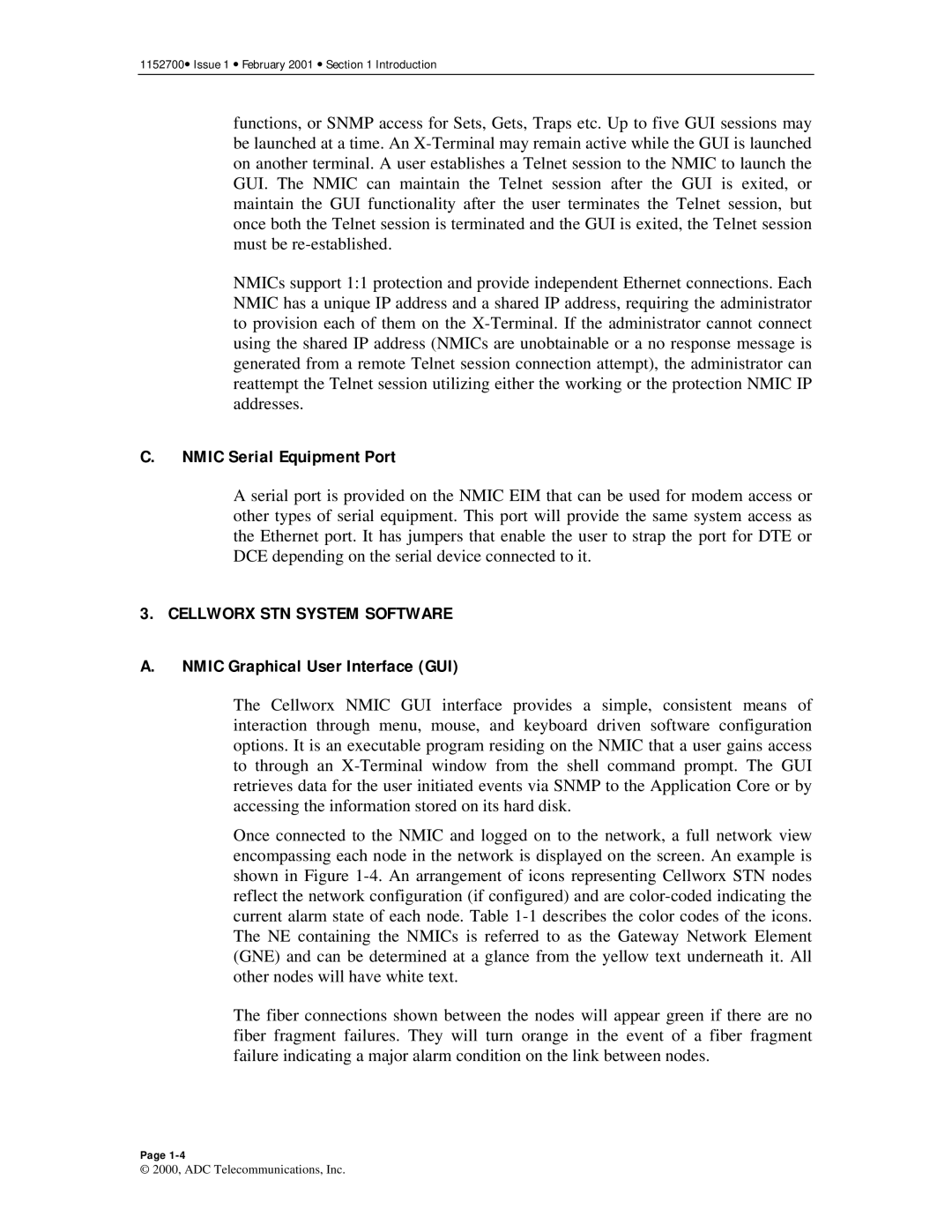1152700• Issue 1 • February 2001 • Section 1 Introduction
functions, or SNMP access for Sets, Gets, Traps etc. Up to five GUI sessions may be launched at a time. An
NMICs support 1:1 protection and provide independent Ethernet connections. Each NMIC has a unique IP address and a shared IP address, requiring the administrator to provision each of them on the
C.NMIC Serial Equipment Port
A serial port is provided on the NMIC EIM that can be used for modem access or other types of serial equipment. This port will provide the same system access as the Ethernet port. It has jumpers that enable the user to strap the port for DTE or DCE depending on the serial device connected to it.
3. CELLWORX STN SYSTEM SOFTWARE
A.NMIC Graphical User Interface (GUI)
The Cellworx NMIC GUI interface provides a simple, consistent means of interaction through menu, mouse, and keyboard driven software configuration options. It is an executable program residing on the NMIC that a user gains access to through an
Once connected to the NMIC and logged on to the network, a full network view encompassing each node in the network is displayed on the screen. An example is shown in Figure
The fiber connections shown between the nodes will appear green if there are no fiber fragment failures. They will turn orange in the event of a fiber fragment failure indicating a major alarm condition on the link between nodes.
Page
© 2000, ADC Telecommunications, Inc.
